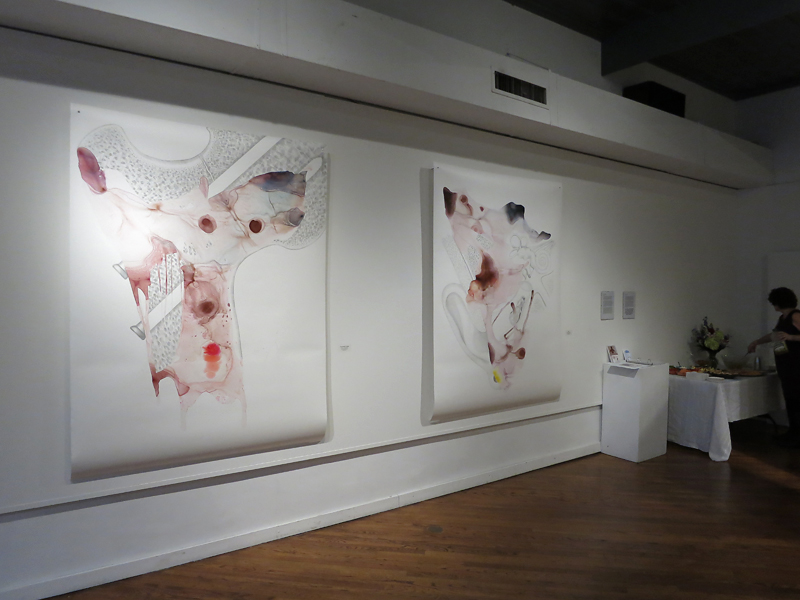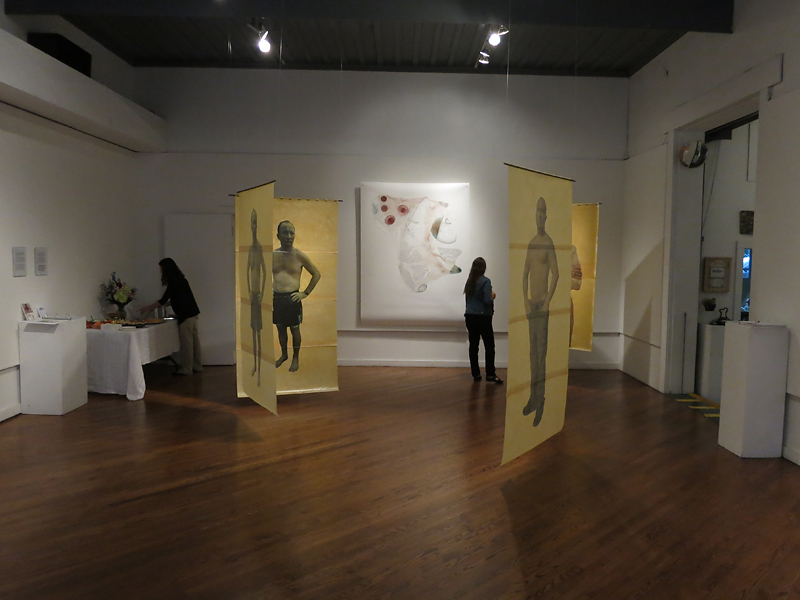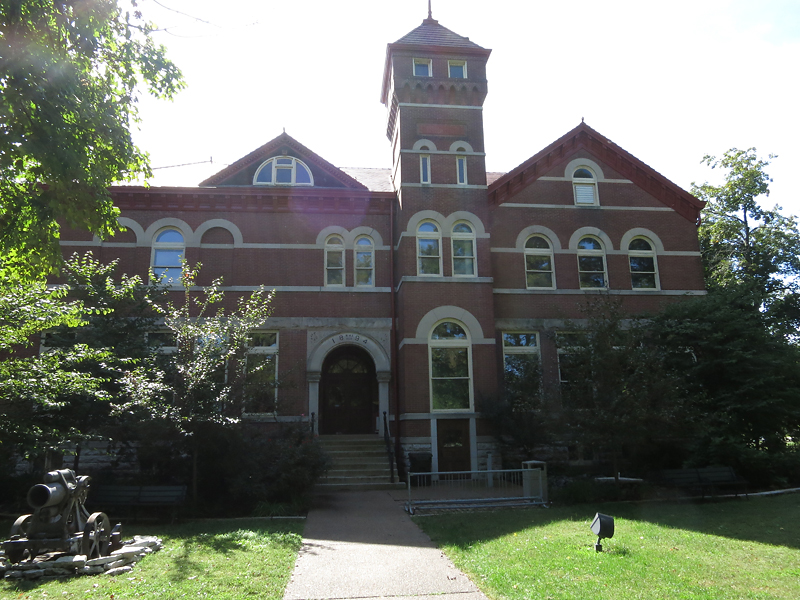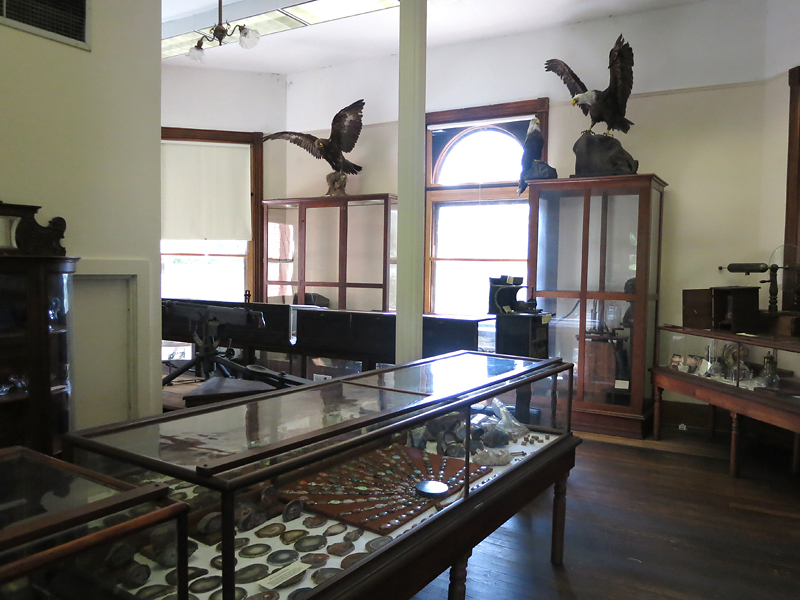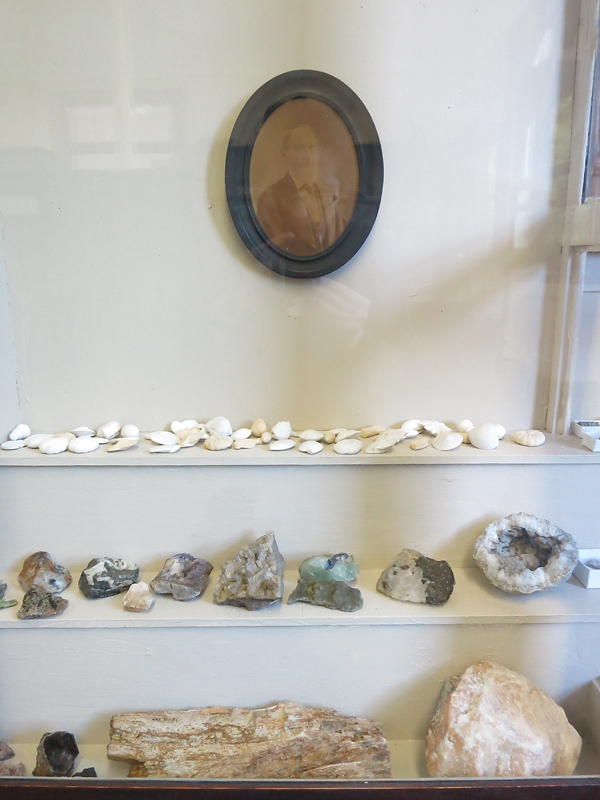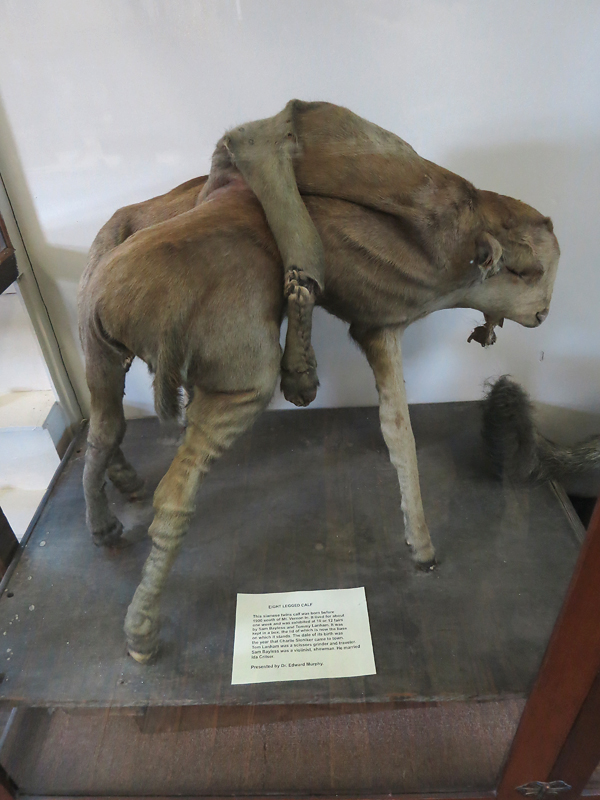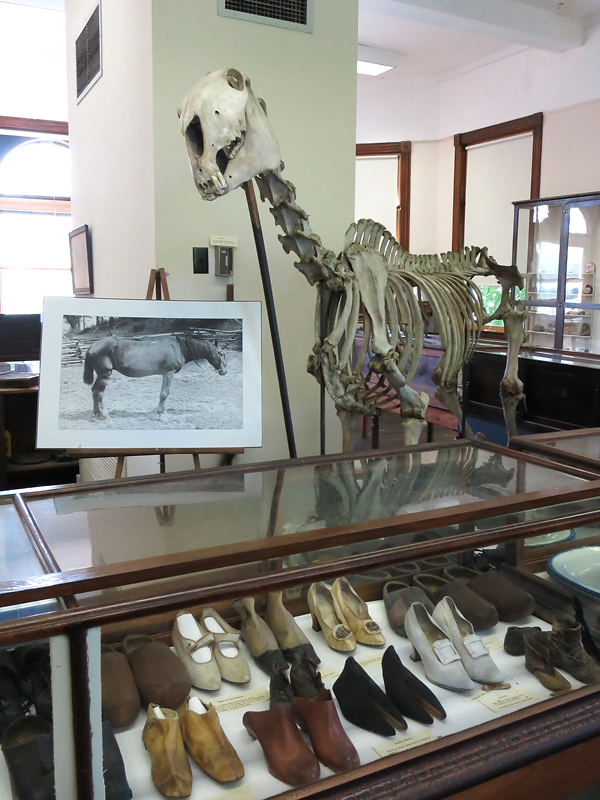This past weekend my neighbor and I set out for a two-day road trip to attend the reception for my exhibition at the New Harmony Gallery of Contemporary Art. The forecast did not look good; I was worried about driving through heavy rain and thunder all day. Instead, we ended up getting chased by the threatening storm that followed directly behind us for all 5 hours through the border of Illinois and Indiana. Coupled with my irrational fear of tornadoes, and with 80-degree weather, the trip was just a bit on the tense side.


The town itself, New Harmony, had a vibe that hovered somewhere between creepy and idyllic, an unlikely combination if you ask me. On the one hand, it was built 200 years ago based on a utopian vision; the remnants of this history are still palpable. On the other hand, the town is currently a small remote tourist attraction accessible only by car; it has all of the plaques, maps, and quaint shops that one might expect of a community dependent on tourism, making it a comfortable and non-threatening place to visit. The two vibes fit awkwardly because they were both based on the representation of a pleasant, safe, tranquil environment that inspires and entertains. The double sense of utopia (Harmonist and tourist) makes New Harmony that much more confusing and interesting.
I visited the town very briefly a couple of weeks ago, maybe for an hour, just to drop off the work for the show. The gallery director, Garry Holstein, was nice enough to give me a quick tour of the town via golf cart, New Harmony’s preferred method of transportation.
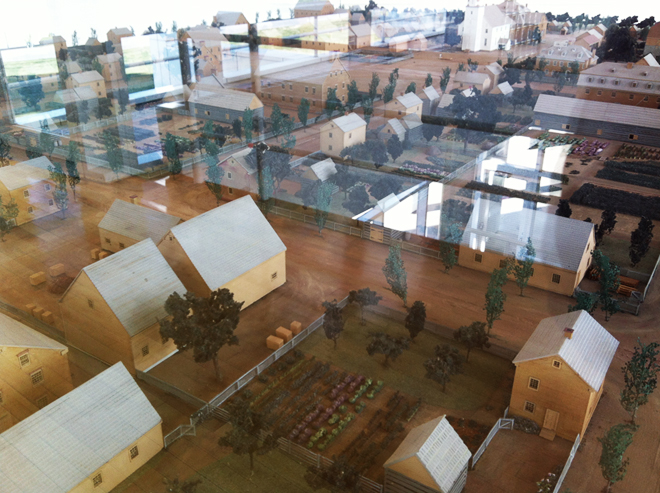
On the day of the reception, Laura and I arrived early. We had a chance to snoop around for a couple of hours. As the rain rolled in, we visited the Richard Meier Atheneum, which housed a small-scale model of the town, among other things. We then took a walk across the puddles to a couple of other buildings before we went to the opening reception. Across the street from the gallery was a store that sold porcelain dolls and various other antiques.
I was very excited to finally see the art installation, especially since both Sara Northerner’s photographs and my drawings were suspended via magnets, giving both series a very similar kind of lightness. Furthermore, her work depicted the exterior of the human body and mine depicted the interior, while the physical positioning of each body of work within the gallery walls was reversed.
After the reception and with help from Garry, the gallery director, I had the opportunity to buy a growler of dark lager made from the 200 year old Harmonist recipe. The nearby pub was closed for a private party so the task required some persuasion. Furthermore, due to the alcohol curfew laws, this was my last and only chance to try this beer, and I really just wanted one small bottle. The half-gallon size that required refrigeration (both before and after opening) was a bit much, especially since I was the only one drinking it. But the beer was tasty and I had access to a fridge so it all worked out okay in the end.

Laura and I stayed in a large guesthouse that was generously provided by the gallery. With antique furniture and an old piano, it was situated right between the small empty log cabins and the Harmonist cemetery. I found the house very cozy, especially with the beating sounds of the downpour, the creaky noises, and the pitch-black darkness surrounding us. My traveling partner couldn’t disagree more.

Speaking of the cemetery, the Harmonists didn’t believe in headstones or any other identification after death. Their burial ground was a simple grassy field without any markers. We naturally began our next morning there, and then made our way across town to look for a persimmon tree, which we found with the help of several locals.
My friend Richard had requested that I look for some persimmons while I was in Indiana – to specifically focus on collecting fruit that had already fallen off the tree. That turned out to be a rather difficult task, as the fallen persimmons have the texture and skin of ripe tomatoes, and the tree was at least 30 feet tall. Not the best combo, but I managed to find a few specimens that were still somewhat intact.

We found lots of other interesting trees, fruits, and creatures on our way to the hedge labyrinth, including “spider apples” and some tiny mushrooms under a tree with pods.
The labyrinth was surprisingly fun to walk through. The chest-high hedge didn’t give the sense of being lost in a maze. Instead, the labyrinth provided an instant sense of mindfulness; it required patience and continuous movement. I became more aware of the birdcalls, daylight, and surroundings.
After visiting the labyrinth, we grabbed some artisan ice cream and set out for the roofless church. This is a more contemporary structure built in the last century, with walls surrounding a large open space and a dome on one end that drapes like a tablecloth placed on a sphere. It is another feat of extremely confusing and intriguing architecture. I was most drawn to the set of doorways on the north wall that looked out onto a huge field of flowers that allegedly flooded when the water levels rose. The sight of these doorways left me with an uncanny vibe that took me back to my MFA thesis work.


Speaking of my MFA thesis, we had an opportunity to go inside one of the empty log cabins that had been turned into a camera obscura. Just as we arrived, the sun was finally out and the view was clear. This is a rare sight: an upside-down and mirrored view of the outer world, projected on the walls of a small log cabin. I wrote about how to make a camera obscura in a past blog entry.
Our last stop was the Working Men’s Institute, the oldest public library in Indiana, which also happens to house an amazing museum upstairs: a sort of large curio cabinet that displays many artifacts and natural formations: centuries old rocks, animals, shoes, laboratory equipment, rifles, swords, skulls, and various other curiosities. The most disturbing sight was probably the eight-legged two-headed calf that in all likelihood was not prepared by a professional taxidermist.
This was one of those magical uncanny road trips that I could easily confuse with a bizarre dream. The following morning, I had a bag of squished persimmons and a trunk full of spilled beer to remind me that it was indeed real.






